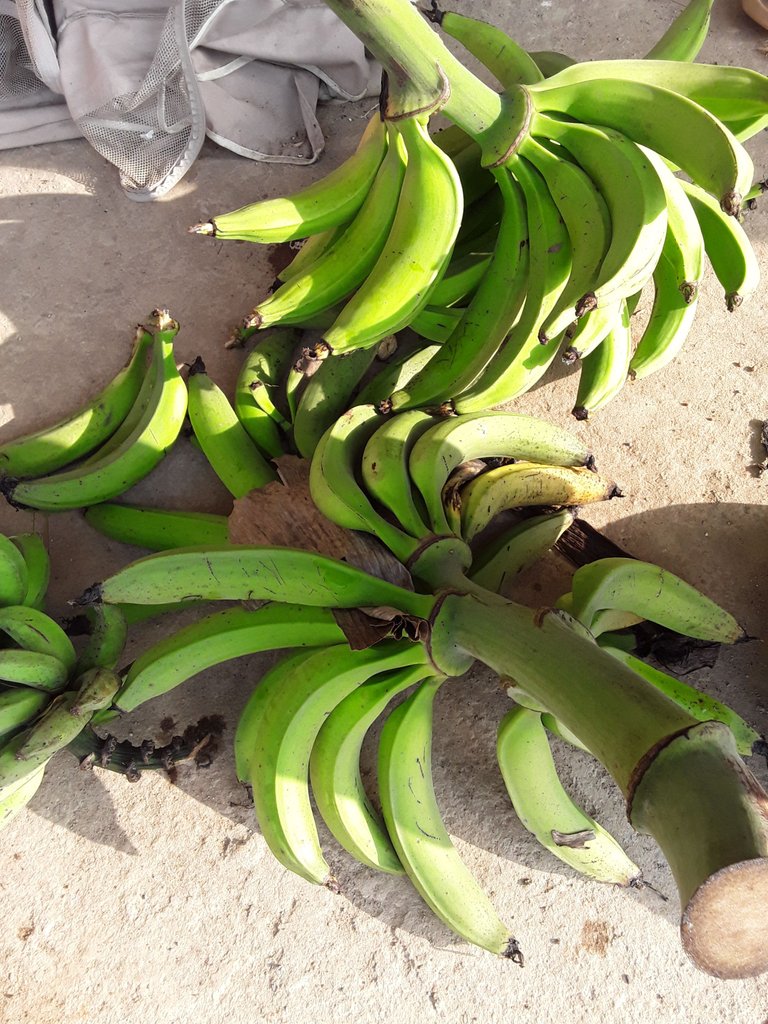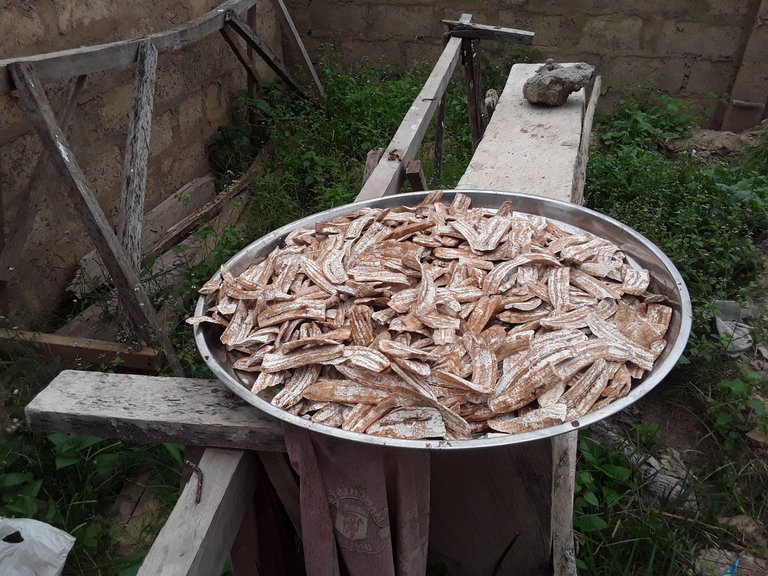Gardening update: Harvesting plantain
I am a sucker for plantain, no doubt. Especially when fried and used to garnish porridge beans. When I started planting plantain suckers in my garden, the only thing on my mind was how I will be having a field day with fried plantain once harvesting starts. Little did I know how wrong I would be.
I was hoping to give a couple of the fruiting plants a few more weeks since it appears they are yet to be fully mature by their sizes. I never knew nature had another plan until I saw a couple of ripened fruits being consumed by birds. Actually, I suspected the fruits will not be as big as fruiting in the rainy season. The dry season has commenced, and now I will have to make do with whatever sizes the fruits assume.
I harvested the bunch by cutting down the stem. I scanned the garden for any other signs of ripening plantain fruits but found none. To be the safe side, I harvested another bunch whose fruits appear to be of the same size as the ripening bunch, even though they are yet to start ripening themselves.

After harvesting just two bunches and still many to come, I started a rethink about just having a fried plantain fiesta. How many of them can I actually eat? Either I end up hurting myself due to excessive consumption or waste a large percentage of the harvest. That was when I decided to make plantain flour out of it.
The making of plantain flour
I kept a small percentage of the fruits for direct consumption as fried plantain after which I painstakingly peeled off the individual fruits one after the other. Only those that show no sign of ripening were considered for the plantain flour as the slightest of ripening will have a not-so-pleasant effects on the final product.
Thereafter, the peeled fruits were sliced into slender pieces for faster drying. It took me and my wife over an hour before completing the task. We are currently in the process of sun drying the sliced plantain. After thorough drying, the next step would be to mill the dry stuff into powder using a suitable milling machine.

The plan is to use the resulting plantain flour in making a local dish known as "amala" for our consumption. Amala is a popular food among the Yoruba tribe in the Southwestern part of Nigeria. It is eaten with soups and can be made from yam flour (black amala), cassava flour (white amala), and the least popular is the one currently being discussed - plantain flour.
Apart from amala, plantain flour can also be used to make other local delicacies such akara and baked into different forms of cakes or bread. It has been found to be highly nutritious and of low glycemic index compared to other flours. Thus, it comes highly recommended for diabetic people.source
Since plantain fruits have very low shelf lives when ripe, I have decided to convert future harvests to plantain flour and only keep small portions for short-term consumption. Dried slices of unripe plantain can be stored at home and milled only when there is a need for plantain flour. By doing so, the shelf life can be prolonged.
This is the littlest I can do towards tackling world hunger. If I can grow what my household and I will eat, lesser demand pressure would be on commercial foods and prices will not be jerked up due to excessive demand.
What do you think?
I wish I could plaint in here, but it is too cold

!1UP
You have received a 1UP from @gwajnberg!
@stem-curator, @pal-curator
And they will bring !PIZZA 🍕.
Learn more about our delegation service to earn daily rewards. Join the Cartel on Discord.
Thanks for your contribution to the STEMsocial community. Feel free to join us on discord to get to know the rest of us!
Please consider delegating to the @stemsocial account (85% of the curation rewards are returned).
You may also include @stemsocial as a beneficiary of the rewards of this post to get a stronger support.